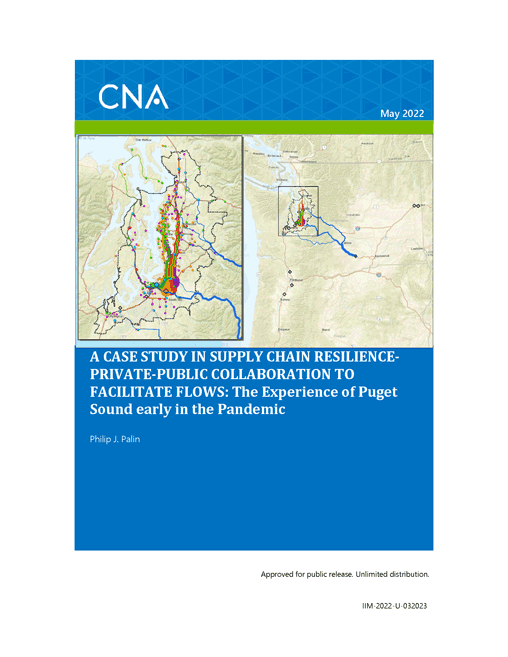A Case Study in Supply Chain Resilience-Private-Public Collaboration to Facilitate Flows
During 2019, the Cybersecurity Infrastructure and Security Agency (CISA) sponsored a proof-of-concept project for supply chain resilience in the Puget Sound region. This project was intended to explore strategies and techniques for facilitating supply chain response and recovery following a catastrophic earthquake. During this project, in August and September 2019, a set of private-private and private-public relationships were built around an analysis of how grocery flows in the Puget Sound region might be maximized after a catastrophic earthquake.
Several participants in the 2019 process have suggested that during the winter of 2020, the project’s relationships and principles had a practical influence on early private-public collaboration in the pandemic response. In February and March 2020, the relationships forged during the 2019 study resurfaced to shape how grocery flows were facilitated during a huge surge in demand caused by pandemic-related consumer anxiety. For a few weeks these Puget Sound–focused relationships influenced wider regional and even national processes, policies, and outcomes. In early May 2020 several participants in the 2019 CISA workshop agreed that given the challenges posed by the pandemic, supply chain outcomes in Puget Sound had been positive—much better than they had seen play out elsewhere. These active participants in the 2019 preparedness discussions and 2020 crisis pandemic response repeatedly confirmed the essential role of relationships in facilitating a more effective response.
This assessment explores these impressions and possible “unintended consequences” of the 2019 project, and derives potential strategic and operational implications. Implications are discussed and follow-on questions are included to prompt consideration of topics for continued examination through other cases and more data-oriented analyses. The assessment is presented in three parts: Case Study: Forming, Storming, Norming, and Performing; Implications and Follow-on Questions; and Origin, Purposes, Methods, and Outcome of the 2019 CISA Project.
Download reportDistribution: Approved for public release. Unlimited distribution.
Portions of this work were performed under contract to DHS CISA, contract number: 47QRAA18D003X.
Details
- Pages: 44
- Document Number: IIM-2022-U-032023
- Publication Date: 5/4/2022
